About the Process
Welcome to the Canadian Human Rights Commission’s complaints process. You have come to this page to learn more about how this process works, and we are here to help.
Our role in this process is that of a screening body. This means we look at the discrimination complaints that come to us and decide if a complaint has the basis for a human rights complaint under federal human rights law, and if not, we help you figure out where you need to go, if possible.
Not every human rights complaint goes through our process in the same way. A complaint may go through one or several steps, depending on the situation. The order of the steps described below can vary because every case is unique.
Overall, our complaints process follows six main steps:
- Step 1 – You file a complaint
- Step 2 – We receive your complaint and determine if it can be accepted
- Step 3 – We process your complaint
- Step 4 – We offer Mediation and / or Conciliation to the parties
- Step 5 – We review and assess your complaint
- Step 6 – The Commission makes a decision
Our Service Standards*
An estimated amount of time is provided for each step of the process. This timeframe may vary depending on the seriousness of the allegations and the volume of complaints filed with the Commission. The Commission has developed an efficient triage model for every complaint that is filed. We prioritize complaints for several reasons including where the alleged victim is in vulnerable circumstances and / or where the allegations may impact a large number of alleged victims.
* All of our Service Standards are currently under review. Once finalized, the Service Standards listed on our website will be updated.
Step 1: You file a complaint
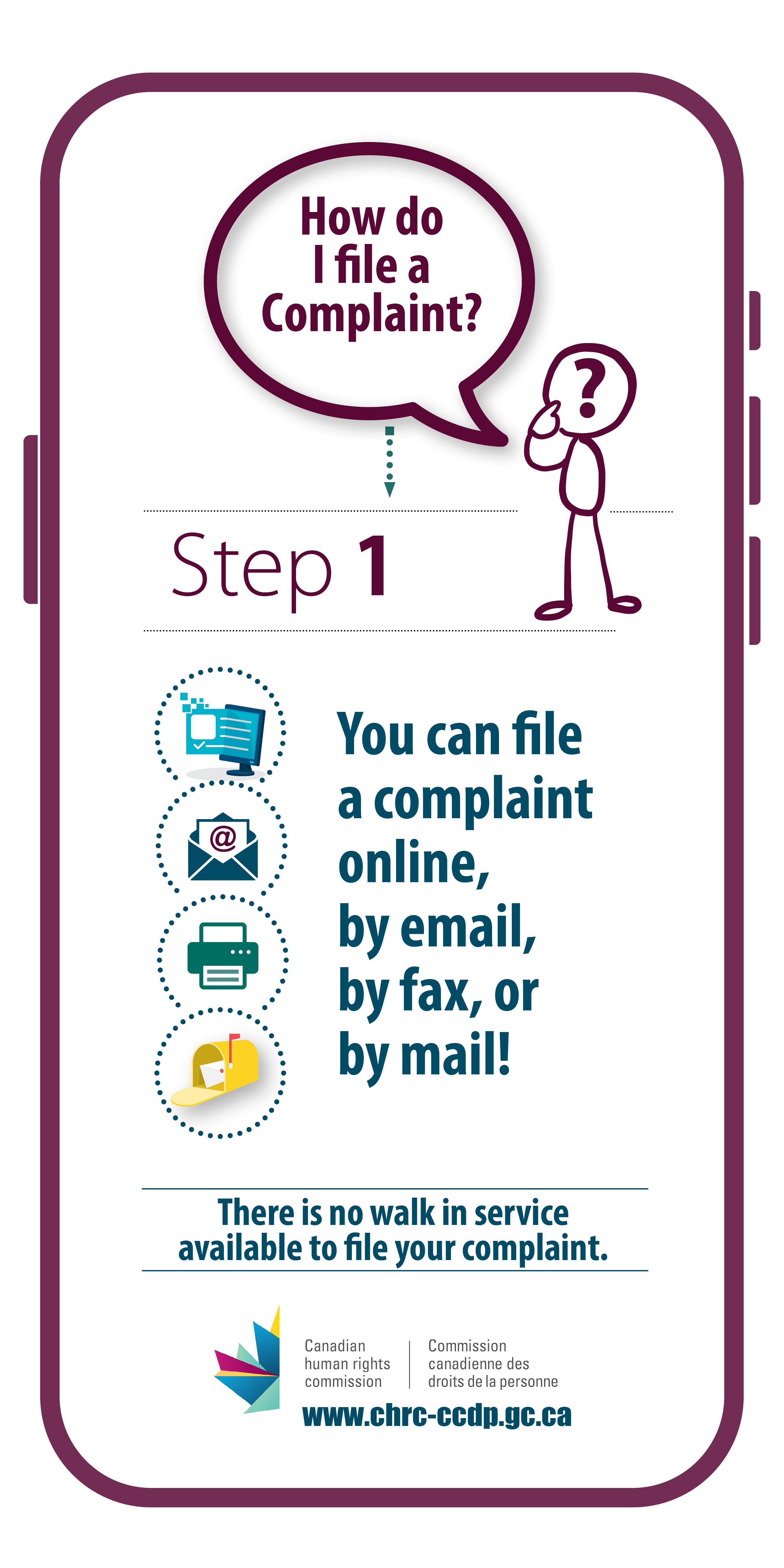
Anyone in Canada has the right to file a discrimination complaint under the Canadian Human Rights Act if they believe they have been discriminated against by the federal government or a federally regulated organization.*
A person, or group of people, can file a human rights complaint by sending us a completed complaint form online, by email, by fax or by mail. (There is no walk-in service available to file your complaint in person.)
*Visit our guide: Discrimination: What Can I Do About It for helpful information about what a federally regulated organization is, and how discrimination is defined in the Canadian Human Rights Act.
Step 2: We receive your complaint and determine if it can be accepted
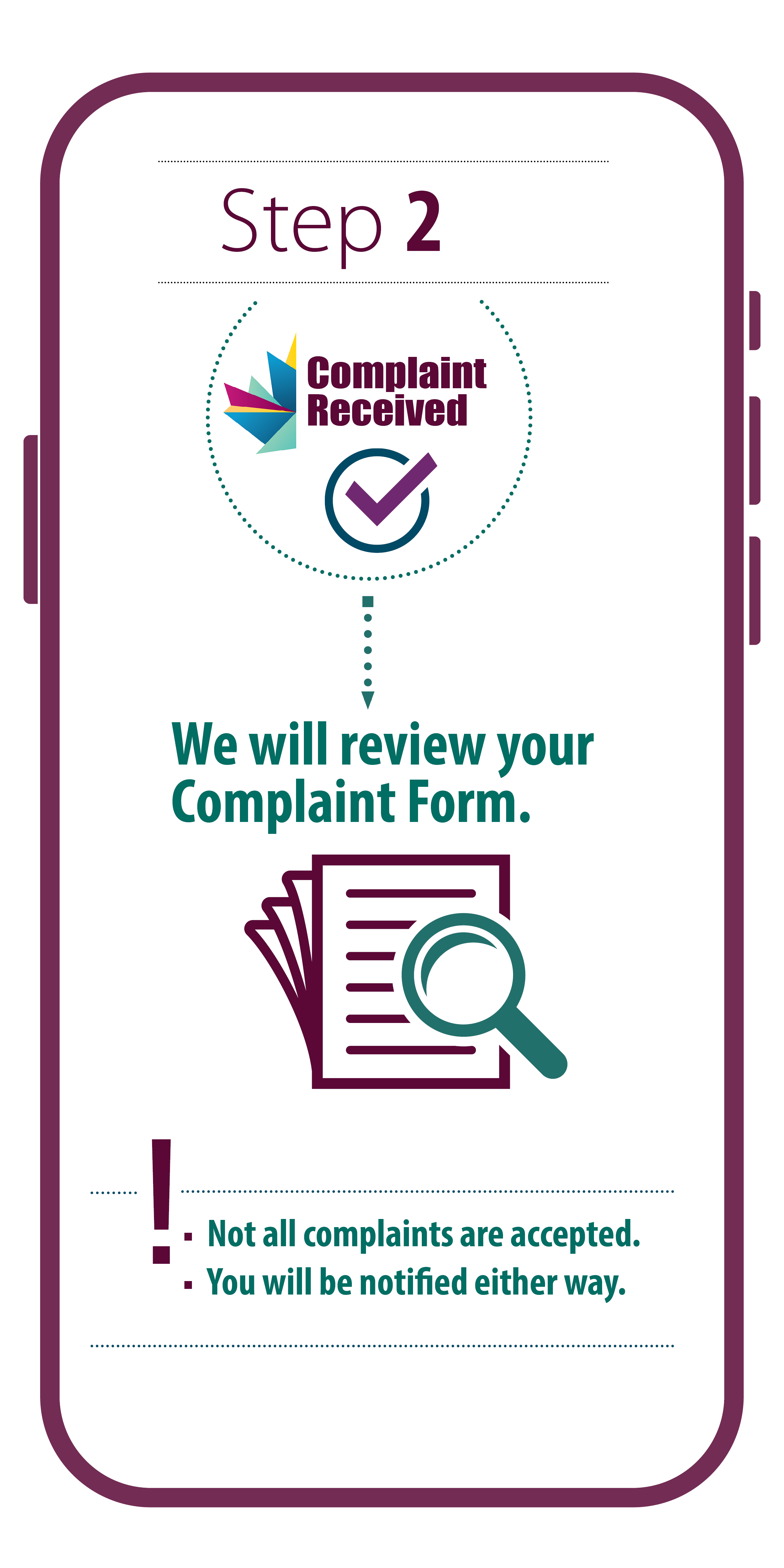
Once we receive your completed Complaint Form, we will review it to ensure that it meets all the necessary criteria of a human rights complaint. We may contact you to get more information.
After we have reviewed the complaint, we will decide whether it can be accepted. Not all complaints we receive are accepted. There are a number of factors involved. We will notify you either way. If your complaint is not accepted, we will explain why.
After your complaint is accepted, you are referred to as “the Complainant”. The person and / or organization you are complaining about is referred to as “the Respondent.”
Important note: If your complaint is accepted, we will notify the Respondent of your complaint.
Step 3: We process your complaint
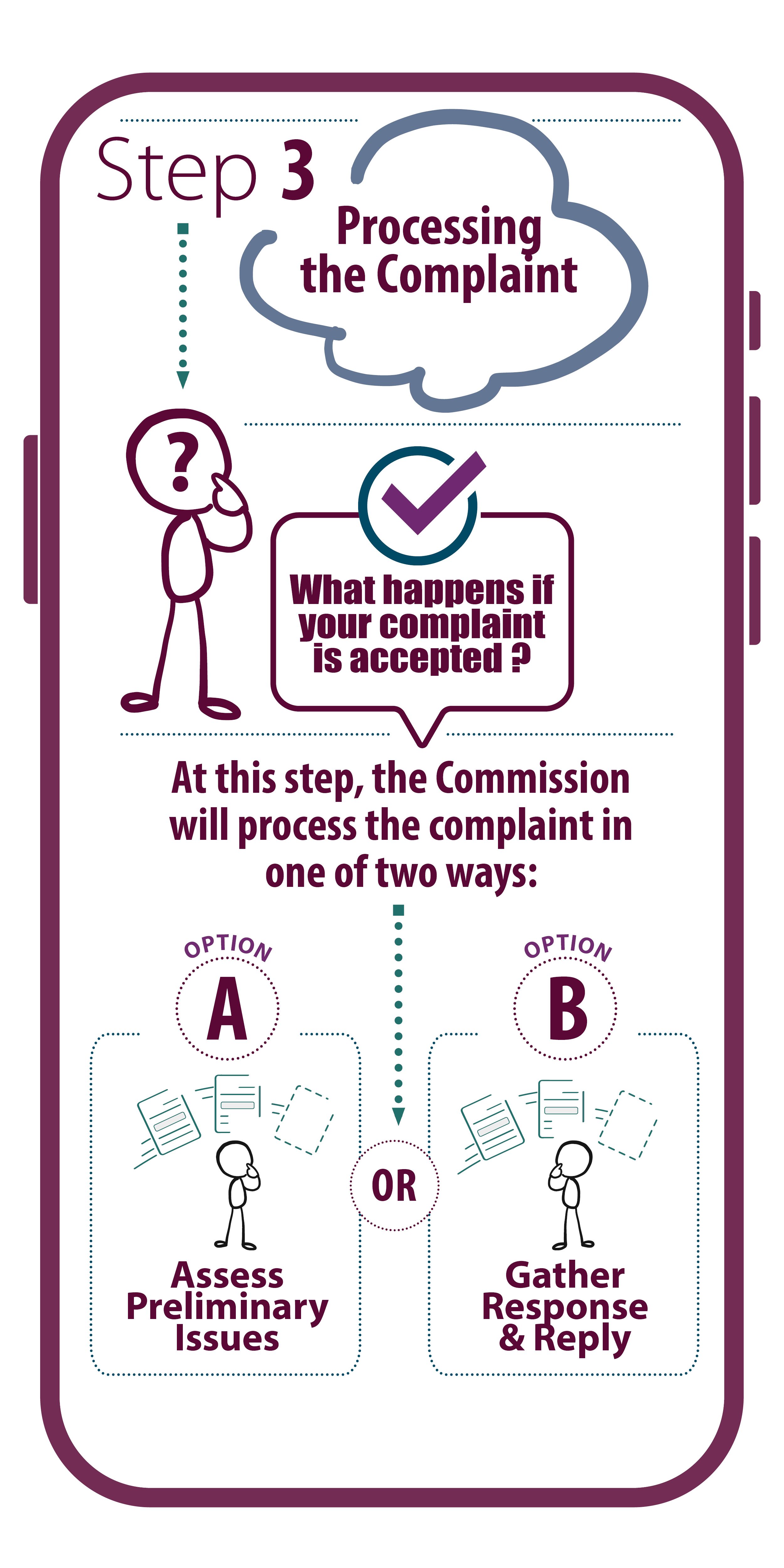
Your complaint has now been accepted. At this step, we will process your complaint in one of two ways:
- Option A: Assess the preliminary issues
- Option B: Gather the Response and Reply
Option A: Assess the preliminary issues
Some complaints require a decision at this step.
When we review your Complaint Form, we may identify some preliminary issues that we need to address.
The assessment of these issues is under section 40/41 of the Canadian Human Rights Act. Based on the review of any preliminary issues that apply to your complaint, there are two possible outcomes:
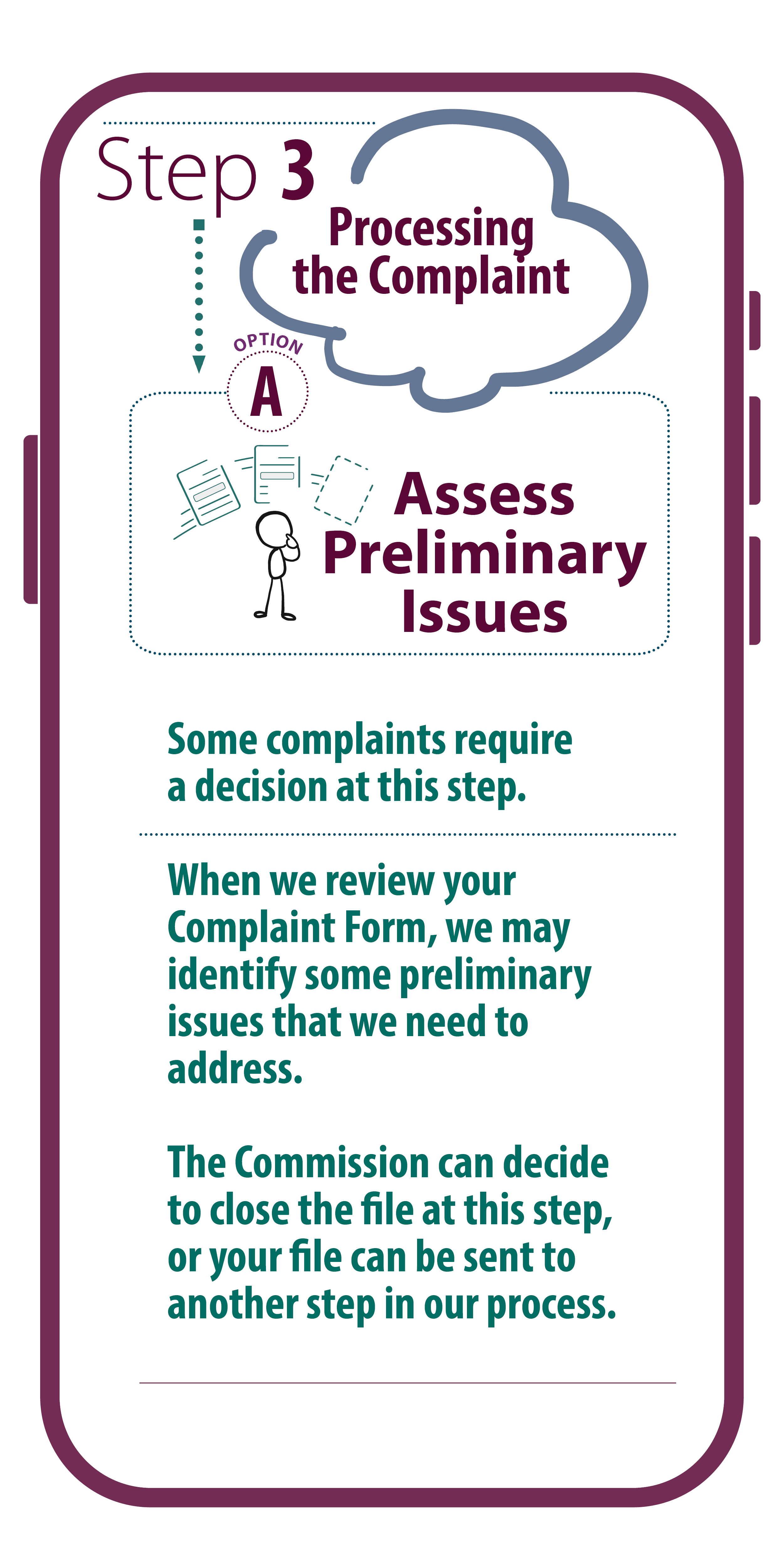
- If the Commission decides not to deal with your complaint, or not to deal with your complaint at this time*, your file is then closed.
- If the Commission decides to deal with your complaint, we will determine the next step, which can include asking for a Response and a Reply.
* The Commission can decide not to deal with your complaint at this time if it decides that another process is available to you to deal with your concerns.
Option B: Gather the Response and Reply
At this step, we will ask the Respondent to fill out a Response Form. The Respondent will have 60 days to send you, the Complainant, and the Commission its completed form. This is where the Respondent has the opportunity to tell its version of what happened.
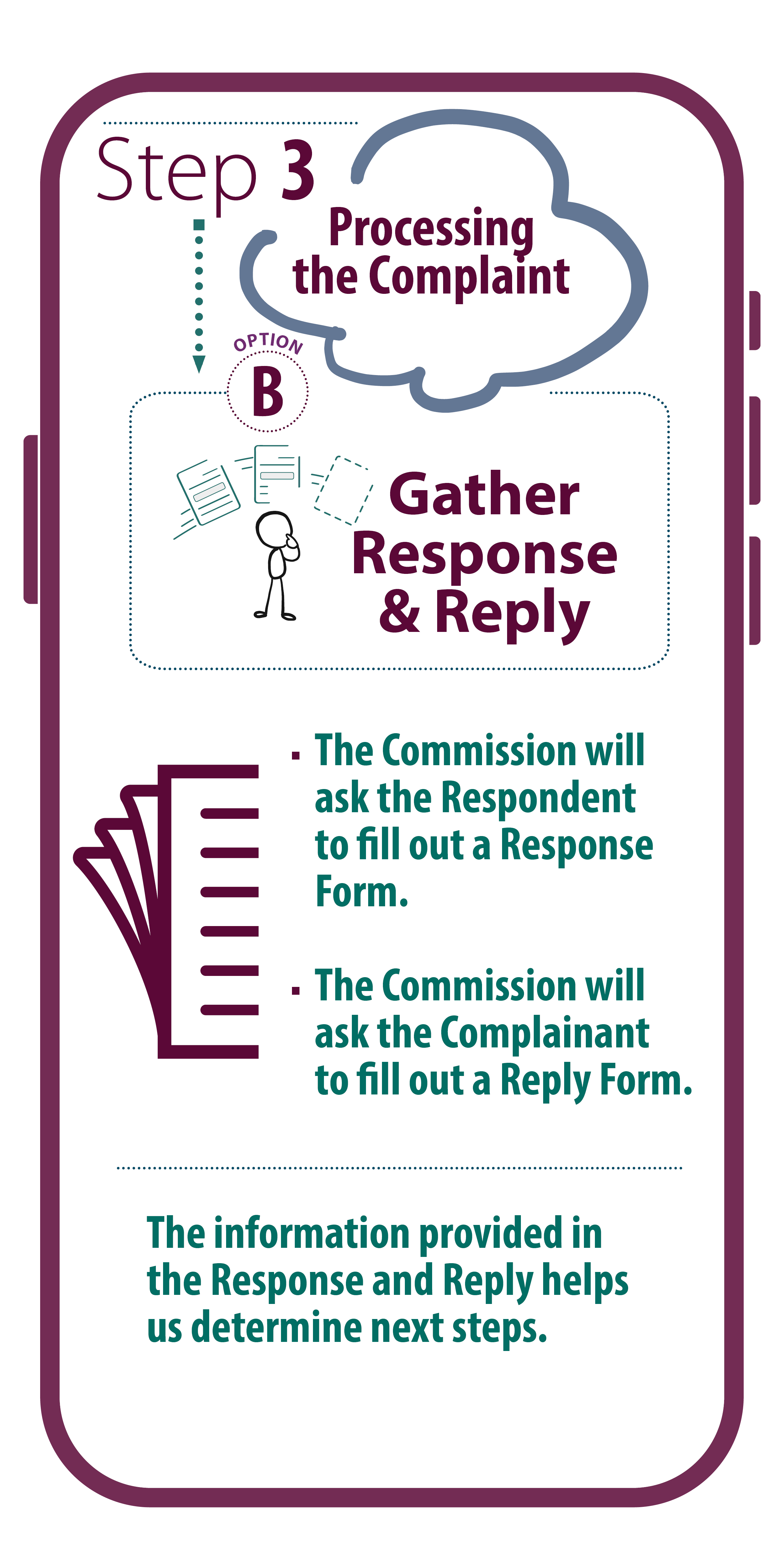
Then, we will also ask you, the Complainant, to fill out a Reply Form. You will be able to rebut any of the facts the Respondent shared in its Response Form. You will have 60 days to send the Respondent and the Commission your completed form.
The information provided in the Response Form and Reply Form helps us determine next steps.
Next steps could include:
- Mediation or Conciliation. a direct referral to the Canadian Human Rights Tribunal. an assessment of preliminary issues, if any are raised that were not already examined, or an assessment of the allegations in the complaint.
Step 4: We offer Mediation and / or Conciliation to the parties
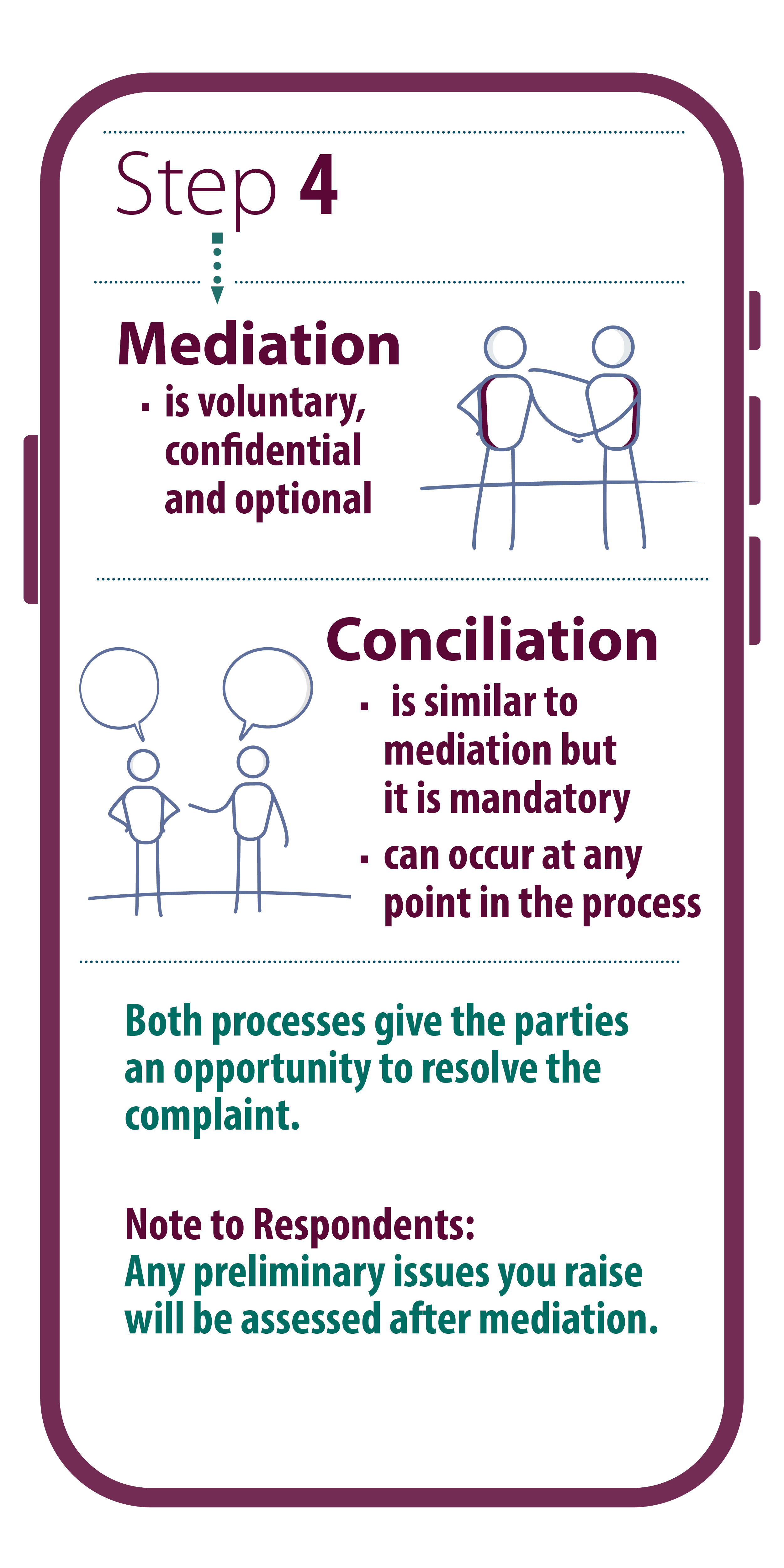
Mediation is voluntary, confidential and optional. The goal is to bring about the settlement of a complaint.
Conciliation is similar to mediation but it is mandatory. The Commission can send a file to conciliation at any point in the process.
Mediation and conciliation give both parties the opportunity to explain what happened, and to try to resolve the concerns that led to the complaint.
Note to Respondents:
Any preliminary issues you raise will be assessed after mediation.
We will schedule and provide mediation and conciliation services at no cost to the parties. Mediation and conciliation are usually scheduled for a half-day session.
All our mediation services are conducted remotely through video or teleconferencing, not in-person. This is a practice that has been in place since the onset of the pandemic, and we have found it to be the most effective and efficient way to support parties in finding resolutions to their complaints. It eliminates the need for travel. It reduces the time required to hold a meeting. It makes scheduling easier, and it speeds up the process overall.
Our priority is to offer a barrier-free human rights complaints process for all. We will continue to offer in-person mediation if requested as a form of accommodation.
Please speak with your assigned mediator if you require any form of accommodation or have any access needs during the mediation process. For more information on the Commission's accommodation policy please visit: Accommodation in the Human Rights Commission's Complaint Process Policy.
If mediation or conciliation results in a settlement, both parties (you and the Respondent) will sign a settlement agreement. This agreement would state what the parties have committed to do to resolve the dispute. It will still have to be reviewed and approved by the Commission.
If mediation or conciliation does not result in a settlement, we will decide on next steps.
Step 5: We review and assess your complaint
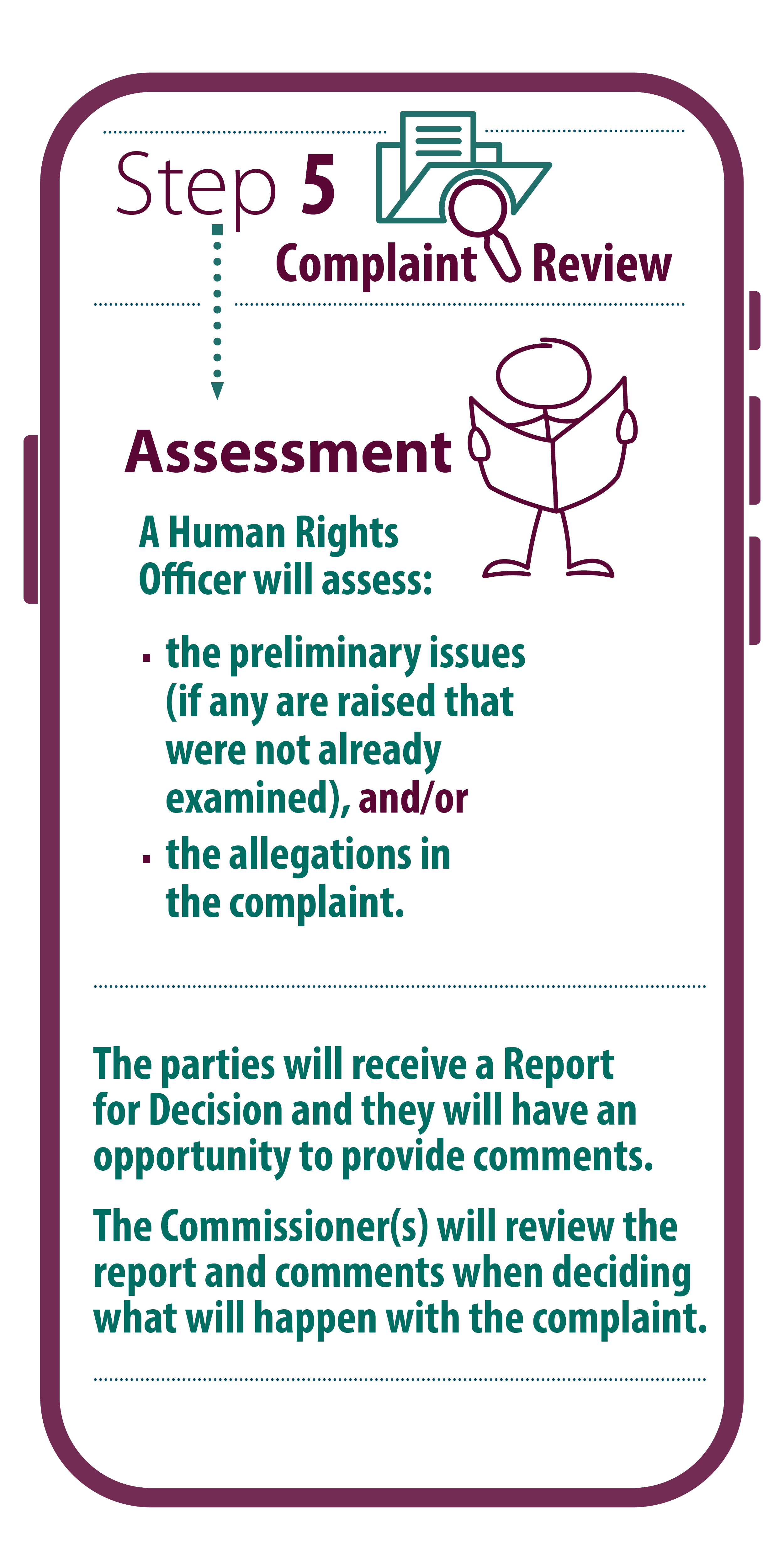
During this step, a Human Rights Officer will assess:
- the preliminary issues (if any are raised that were not already examined), and / or,
- the allegations in the complaint.
The Human Rights Officer will:
- review the Complaint Form;
- review the information in the Respondent’s Response Form;
- review the information in your, the Complainant’s, Reply Form;
- request additional information from one or both parties if required;
- interview witnesses if required;
- consider whether there is information to support the allegations in the Complaint;
- prepare a Report for Decision.
A Report for Decision is the Report prepared by the Human Rights Officer about your complaint. It includes an assessment of the preliminary issues and / or the allegations in the complaint. The Report also contains one or more recommendations for the Commissioner(s) to decide on – the Report is not a decision. Both you and the Respondent will have an opportunity to provide comments on the Report before it is sent to the Commissioner(s) for a decision.
The Commissioner(s) (sometimes referred to as “the Commission”) will review the report and any comments requested and received from the parties. The Commissioner(s) will then carefully decide what will happen with the complaint. Both you and the Respondent will receive a copy of the Commission’s decision.
Step 6: The Commission makes a decision
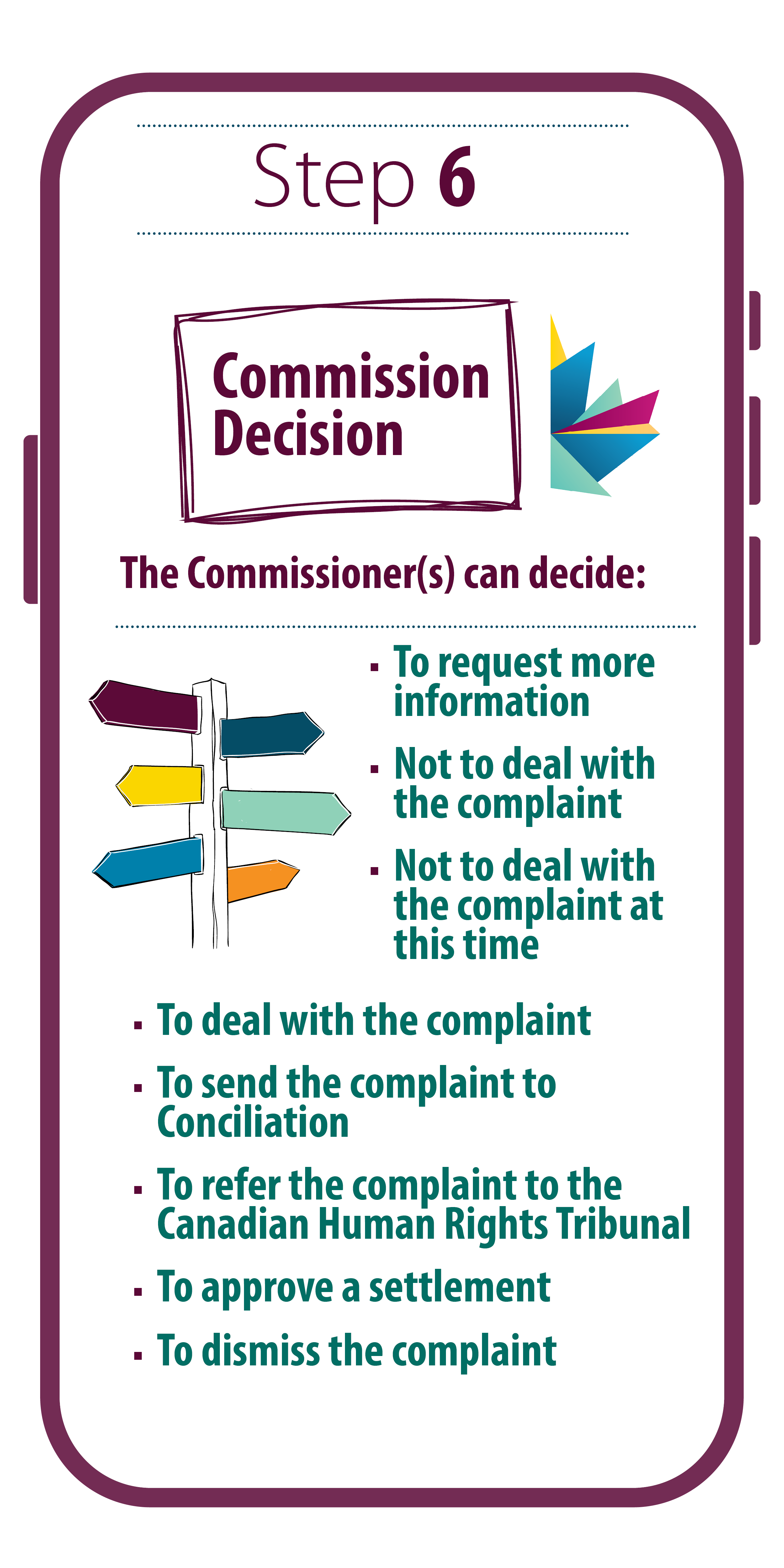
The decision on all human rights complaints is made by the Commissioner(s) (sometimes referred to as “the Commission”). The Commissioners, including the Chief Commissioner, are all appointed by The Governor in Council to make informed, impartial and independent decisions on human rights complaints.
The Commission does not decide whether there has been discrimination. It is the Commission’s job to screen discrimination complaints. The Commission can decide to send a complaint to the Canadian Human Rights Tribunal for a more in-depth inquiry. It is the Tribunal’s job to decide if there has been discrimination. The Tribunal is separate and independent from the Commission.
When making the decision on your complaint, the Commissioner(s) can decide:
- To request more information and / or further assessment before making a decision
- “Not to deal with the complaint”*
- “Not to deal with the complaint at this time”*
- “To deal with the complaint”*
- To send the complaint to Conciliation
- To refer the complaint to the Canadian Human Rights Tribunal
- To approve a settlement
- To “dismiss” the complaint*
The wording used in Commission decisions comes from the Act.
* When making a decision on preliminary issues under section 40 or 41 of the Act, the Commission can decide “not to deal with” or “to deal with” the complaint. The Commission can also decide “not to deal with the complaint at this time” if it decides that another process is available to you to deal with your concerns.
* When making a decision on the allegations in the complaint, the Commission can decide to “dismiss” the complaint if it decides that further inquiry by the Canadian Human Rights Tribunal is not required / warranted.
Decisions made by the Commissioner(s) are final.
Learn More
Our Service commitments
If you are involved in a complaint with the Commission, either as a Complainant or a Respondent, this section outlines our commitments to you during each stage of our process.
We are committed to being transparent and accountable. Our service standard is our commitment to a specific level of service you can expect under normal circumstances.
Our commitment to you
We are committed to providing you with quality service.
When you access our services, we will:
- Explain clearly how the complaints process works
- Tailor our approach to your needs
- Treat you with courtesy and respect
- Protect your personal information
- Respect our service standard
How you can help us serve you better
To help us serve you better, please:
- Always include the complaint file number, and provide all requested information and details as soon as possible after we contact you.
- Keep a copy of all information related to your complaint, including relevant emails, letters, notices, policies, etc.
- Let us know of any changes to your situation, such as changes to your contact information.
- Tell us if you need special assistance.
- If you choose to have someone represent you, tell us their name and contact information.
- Treat our staff with courtesy and respect.
- Date modified: